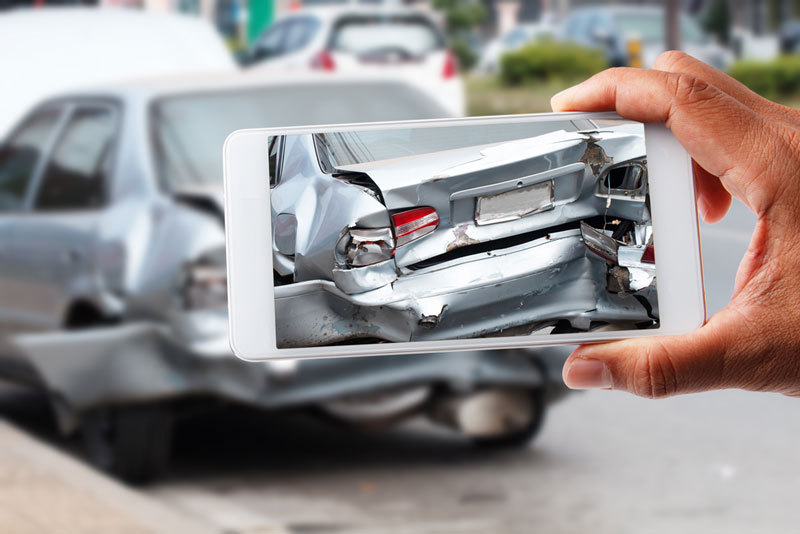What to Do After an Auto Insurance Claim
Auto insurance is essential for any car owner. It provides peace of mind, protects against financial loss, and ensures that you, your passengers, and other drivers are protected in the event of an accident. However, accidents do happen, and it's crucial to know what to do after an auto insurance claim.
Filing a claim can seem overwhelming, but with the right steps, you can navigate the process with ease. In this blog post, we will provide you with a step-by-step guide on what to do after an auto insurance claim.
Step 1: Report the Claim
 The first step after an accident is to immediately report the claim to your insurance company. It is crucial to act promptly to ensure a smooth claims process. When contacting your insurer, make sure to provide accurate and detailed information about the incident.
The first step after an accident is to immediately report the claim to your insurance company. It is crucial to act promptly to ensure a smooth claims process. When contacting your insurer, make sure to provide accurate and detailed information about the incident.
This includes the exact location, date, and time of the accident, as well as the names and contact information of all other drivers involved. It is also important to provide the make and model of the vehicles involved, along with any relevant details from witnesses who may have observed the accident.
Remember, this information is not only essential for the claims process but also for ensuring a fair and efficient resolution. Always be truthful and cooperative with your insurance company to expedite the process and achieve the best possible outcome.
Step 2: Document the Damage
The next step in the process is to thoroughly document the damage to your car. It is crucial to take detailed photos of any damage, both on the interior and exterior of your vehicle. These photographs will serve as essential evidence when filing your insurance claim. Additionally, it is advisable to retain all receipts related to repairs, rental cars, or any other expenses incurred as a direct consequence of the accident.
It is worth noting that certain insurance policies may impose specific requirements with regard to the handling of your vehicle's damage, such as mandating that you take it to a preferred repair shop for an estimate or consultation.
Step 3: Get a Car Rental
If you're unable to use your car after an accident, don't worry! Your insurance policy may provide coverage for a rental car while your car is being repaired. This means you won't have to worry about transportation during this time. However, it's important to check with your insurance company to understand the specifics of your policy and whether rental car coverage is included.
If rental coverage is included, the insurance company will likely provide you with detailed instructions on how to obtain a rental car through their preferred rental car companies. They want to make the process as smooth as possible for you. So, rest assured that they've got you covered in case you need a temporary set of wheels while your car is in the shop.
Step 4: Wait for an Adjuster
Once you have reported your claim, a dedicated adjuster will be assigned to thoroughly investigate and assess the damage. The adjuster will then schedule a convenient appointment with you to inspect your car and meticulously evaluate the extent of the damage. It is crucial to ensure your availability for this appointment and provide any necessary information or documentation that may assist in the process.
Following the adjuster's comprehensive assessment, the insurance company will provide you with an accurate estimate of the costs involved in repairing or replacing your vehicle. Depending on the specific terms of your policy and the severity of the damages, the insurer may issue a settlement check directly to you or opt to send it to a reputable repair shop of your choice.
Step 5: Communicate with Your Insurance Company
It is of utmost importance to establish and maintain regular communication with your insurance company throughout the claims process. Be diligent in keeping track of the claim number provided to you, as it serves as a vital reference point. Should there be any changes or updates pertaining to your claim, promptly notify your insurance company.
Additionally, don't hesitate to ask any questions that may arise and seek a comprehensive understanding of the specifics of your policy and how they relate to your claim. By ensuring effective and thorough communication, you can navigate the claims process with confidence and clarity.
Filing an auto insurance claim may seem daunting at first, but by following these simple steps, you can ensure a smoother and more efficient process. Remember to be truthful and cooperative with your insurance company and document all necessary information and evidence. By doing so, you can maximize your chances of receiving fair compensation for any damages or losses incurred in the accident. So, if you ever find yourself in a situation where you need to file an auto insurance claim, refer back to this guide for a stress-free and successful claims experience.



